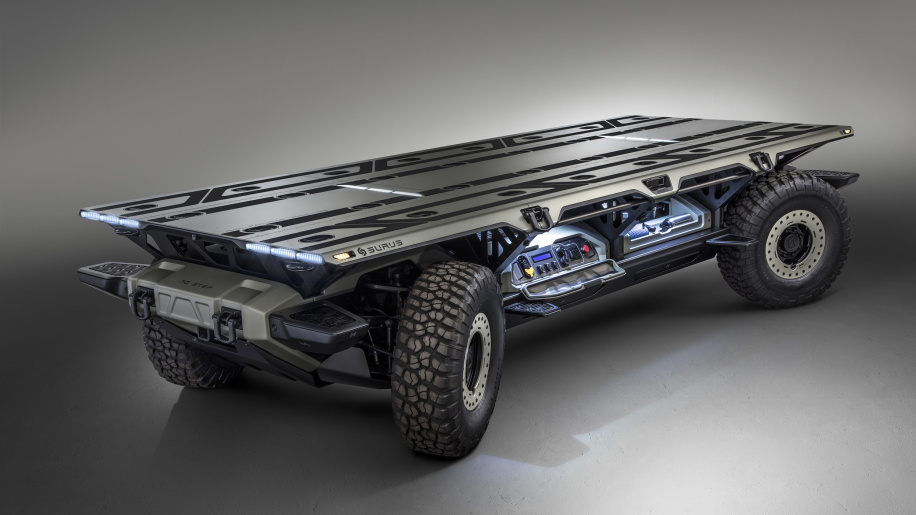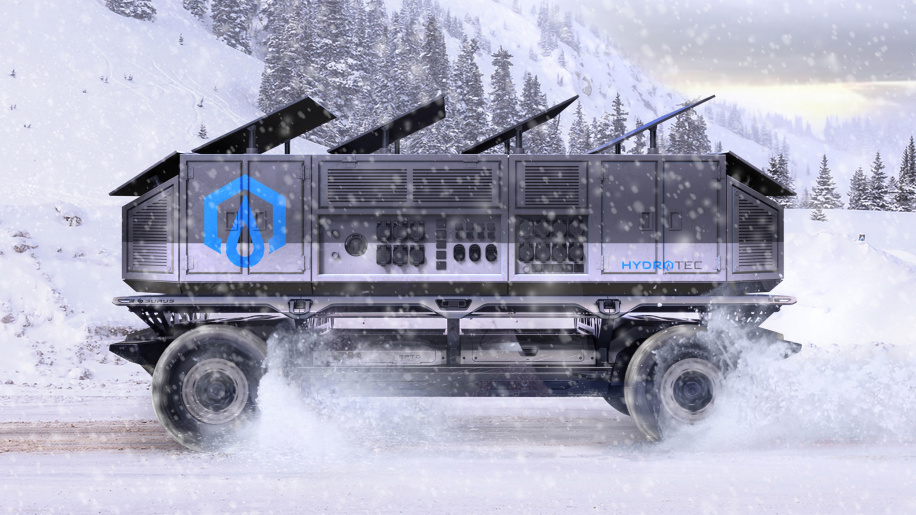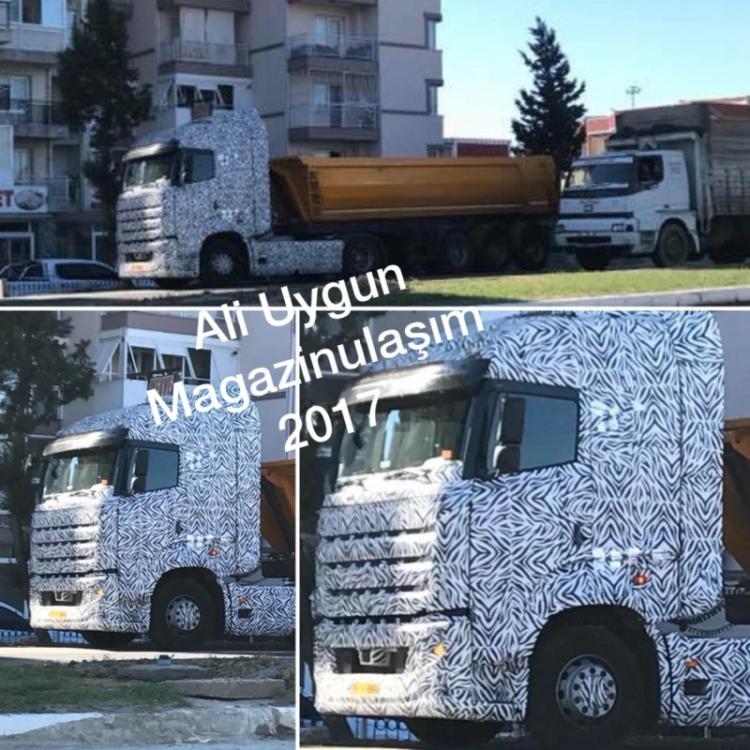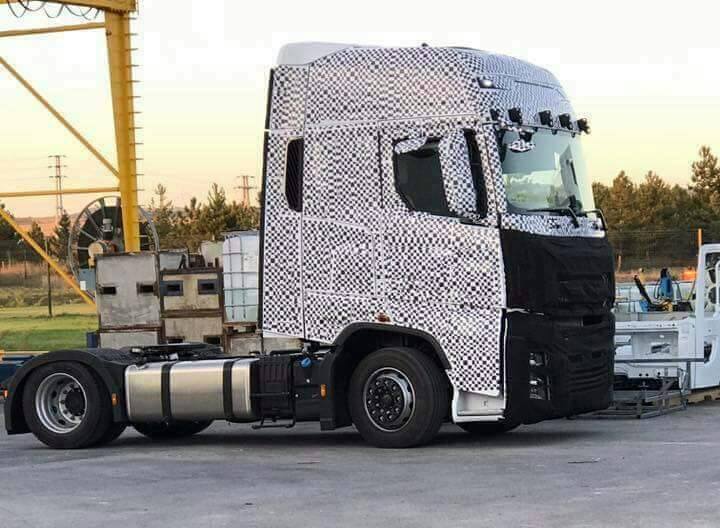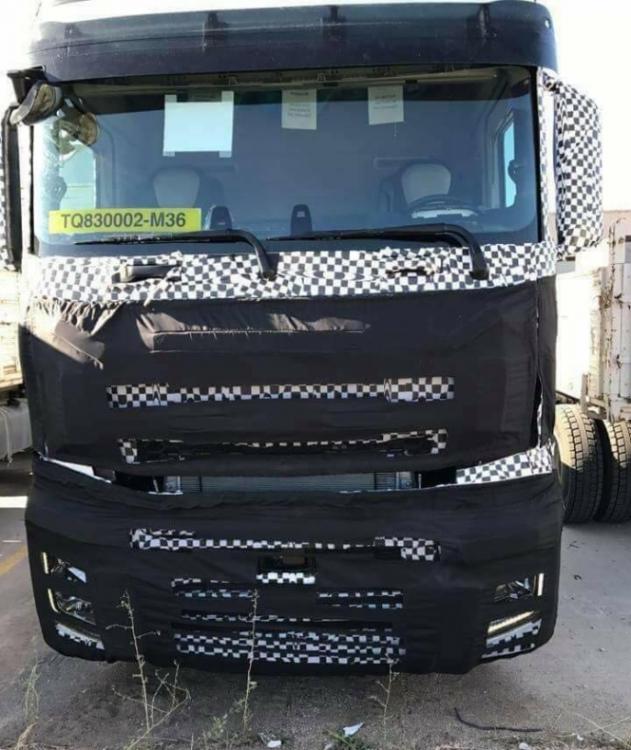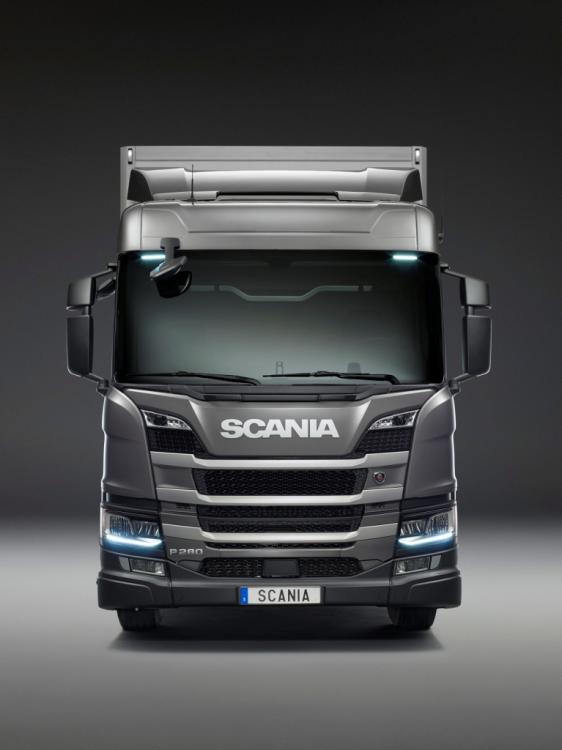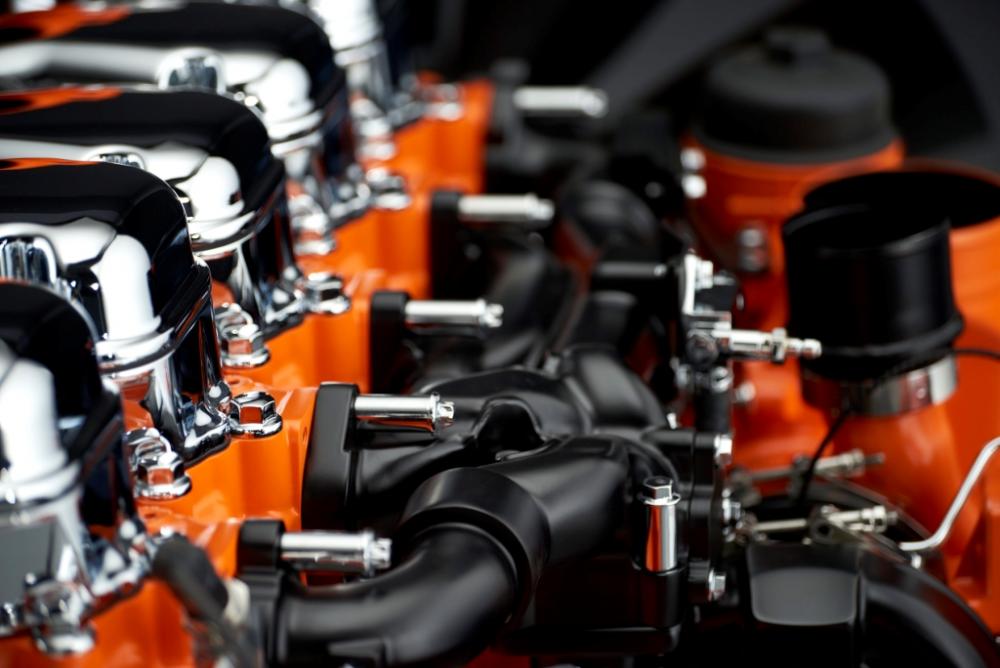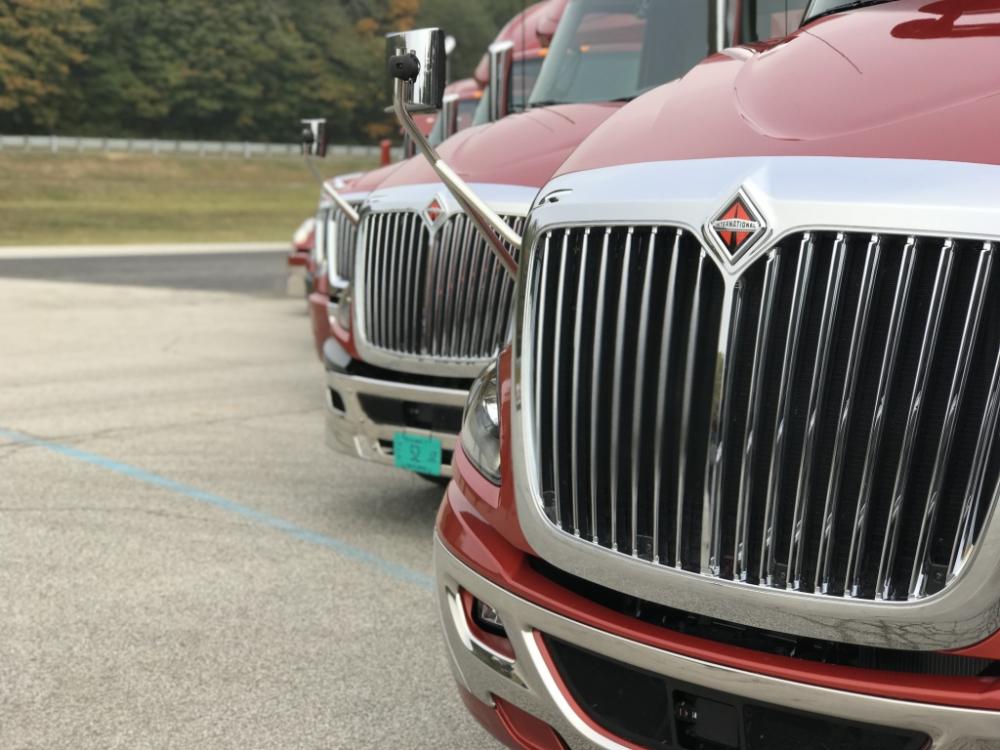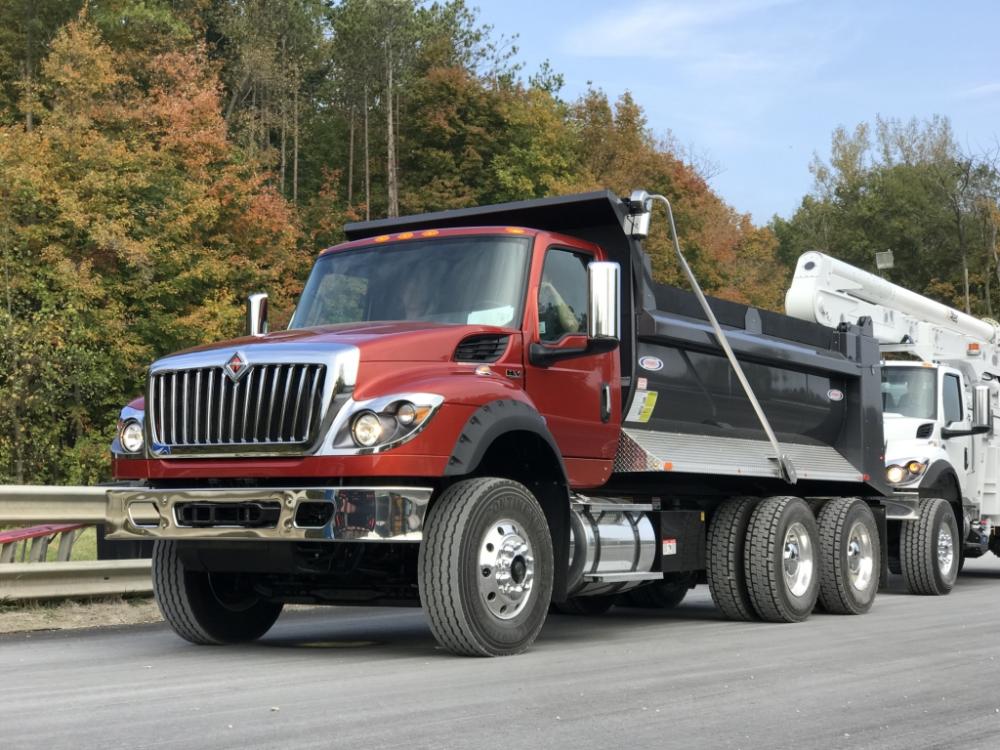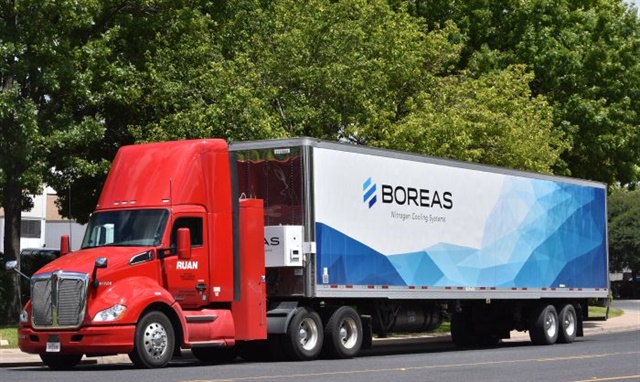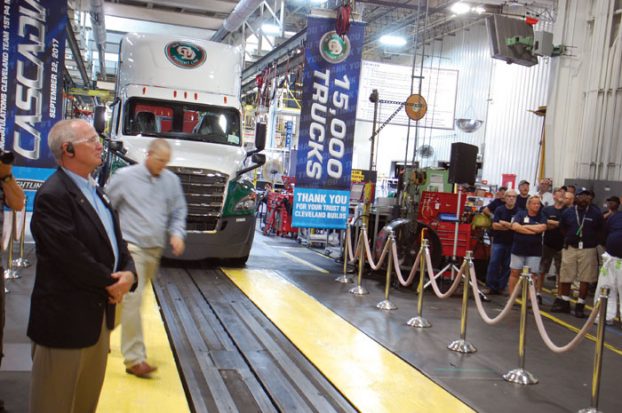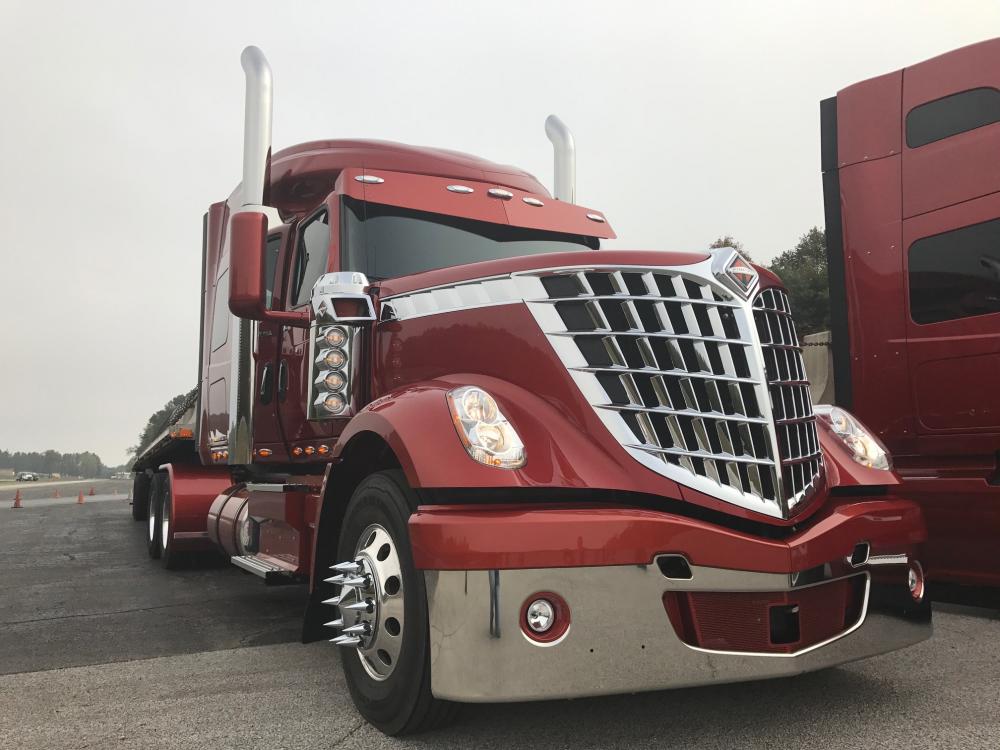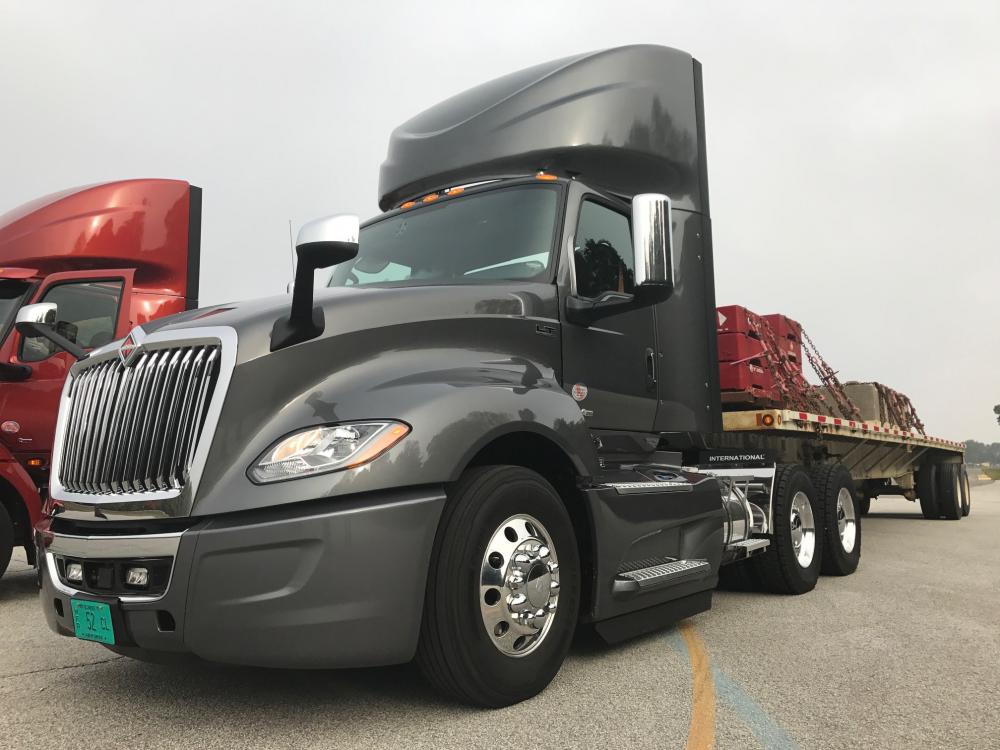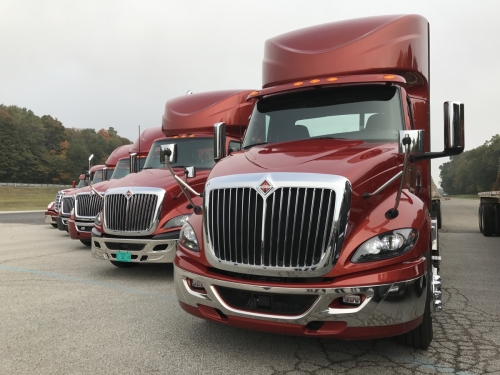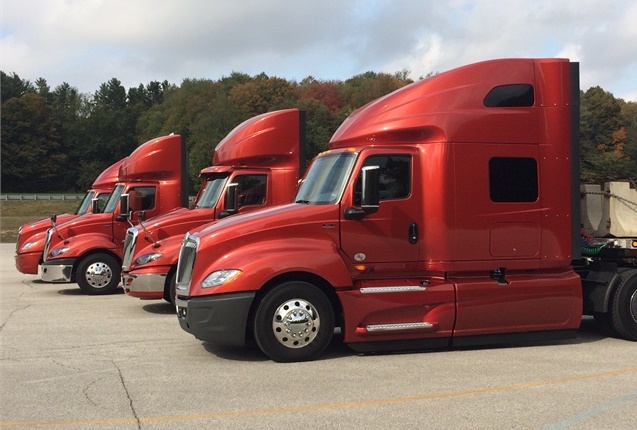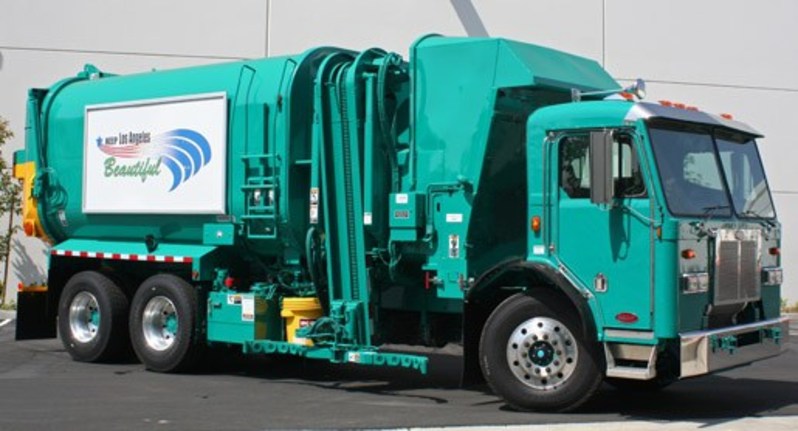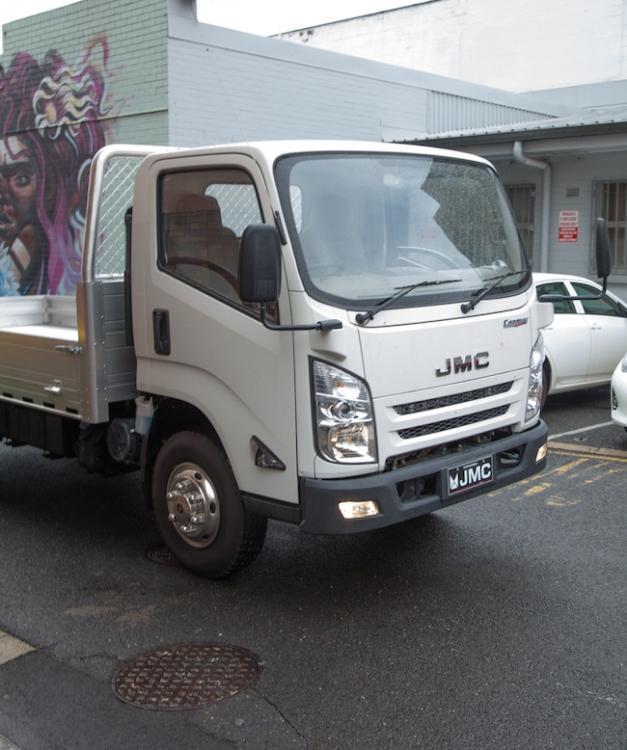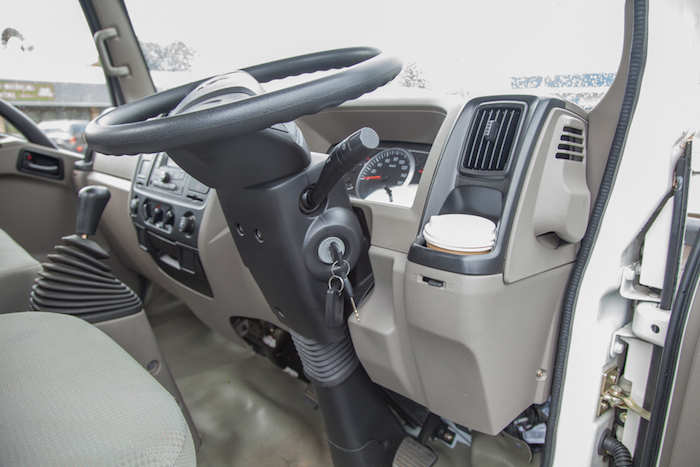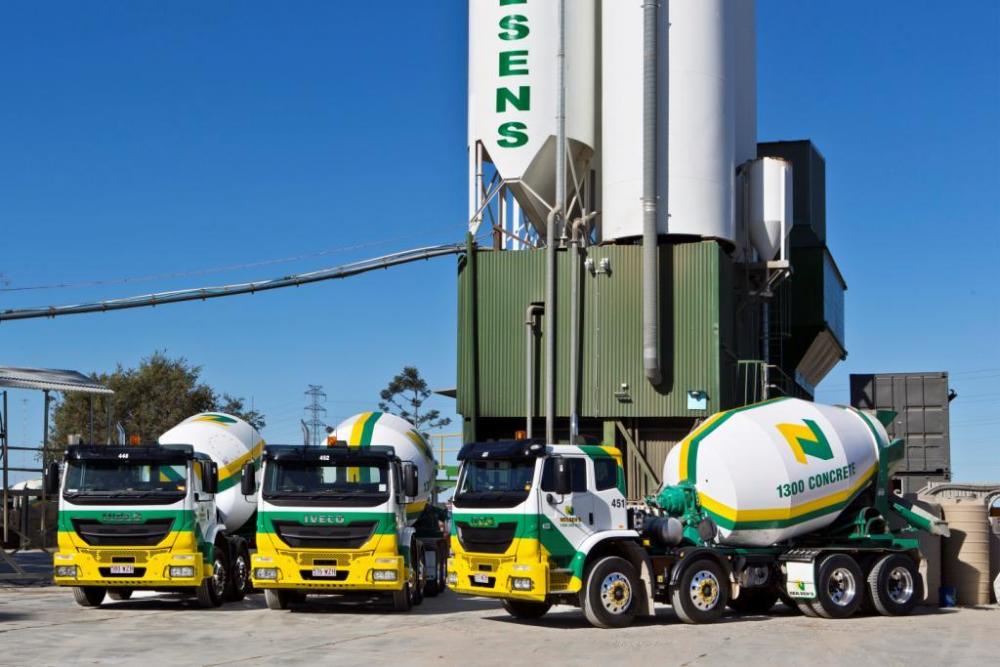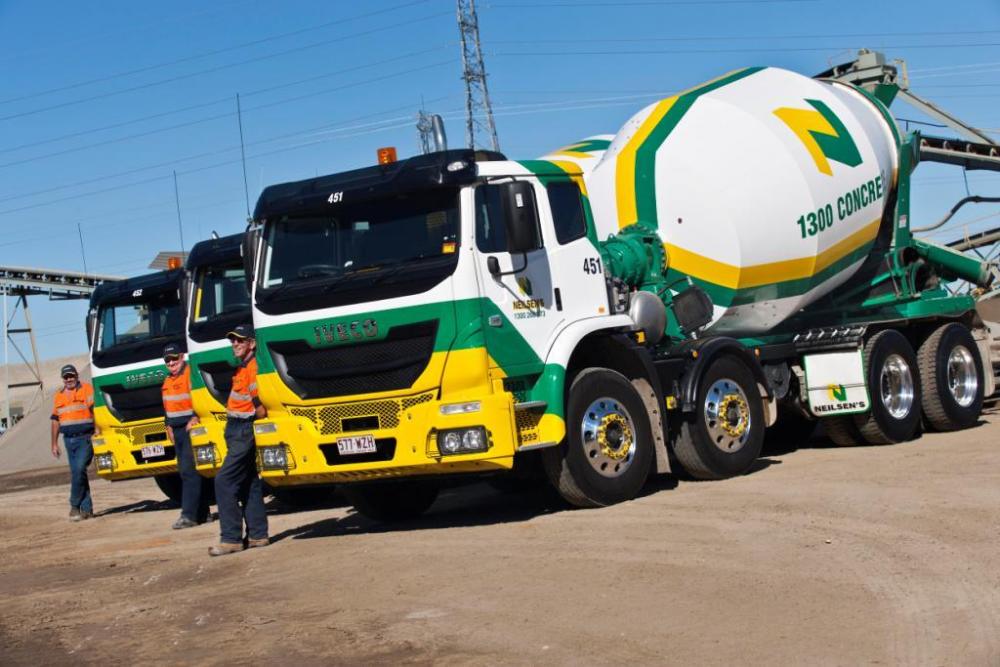
kscarbel2
Moderator-
Posts
18,855 -
Joined
-
Days Won
114
Content Type
Profiles
Forums
Gallery
Events
Blogs
BMT Wiki
Collections
Store
Everything posted by kscarbel2
-
GM SURUS is basically an autonomous, zero-emission, off-road skateboard Autoblog / October 6, 2017 In what's something of a throwback to the GM Autonomy concept of 2002, GM has revealed another hydrogen fuel cell platform that's effectively flat and can accept just about any body. It's called SURUS, which stands for Silent Utility Rover Universal Superstructure. But unlike the Autonomy, General Motors sees the SURUS as being capable of much more than just transportation. This is because of a couple of key features. First, the SURUS uses strong, durable truck components sitting on big knobby truck tires, so it can handle heavy loads, and it can go almost anywhere. Second, the SURUS is capable of autonomy, which permits a few interesting possibilities. It wouldn't have to have someone capable of driving it, meaning anyone could use or request one. It also wouldn't have to have a compartment for a driver and controls, opening up more space for other uses. As such, General Motors envisions the SURUS as being able to handle construction and military transport and hauling duties. But, as illustrated in the photos above, there's also the possibility that it could be used as a self-driving transport for cargo on Interstates or in shipping yards. It could become a mobile medical unit, using all of its space for treating patients and carrying supplies. GM also suggests it could be used as a mobile power generator, bringing electricity to remote or disaster-ravaged regions. As an aid or relief vehicle, the SURUS has other advantages. Its fuel-cell powertrain, which has storage for 400 miles worth of hydrogen, is quiet and could be used as a generator. It could even be used inside because it doesn't release any dangerous fumes. It also generates water as a by-product of operation, which could possibly be handy in areas in need of water. Coming back to heavy-duty needs and military possibilities, the SURUS's design and powertrain have other advantages. Its two electric motors provide plenty of torque for heavy loads and off-roading. It should be very maneuverable thanks to four-wheel steering. And specifically for military purposes, the quiet operation and power generation would be a major benefit for running missions in remote areas and when stealth is necessary, advantages pointed out when the Colorado ZH2 military concept was revealed. It may still be a while before we start seeing these wheeled platforms roving roads and non-roads, though. General Motors hasn't given a tentative launch date for such a vehicle. Photo gallery – https://www.autoblog.com/2017/10/06/gm-surus-autonomous-zero-emission-off-road-electric/#slide-7115472 .
-
BMC is re-entering the commercial truck segment. BMC ceased production of commercial trucks in May 2013 when it was seized by the Turkish government, after which it focused on defense business with armored vehicles. From a distance, the new model looks impressive. .
-
The current Ford Cargo, an impressive truck in its own right in both the on-highway and vocational segments, was introduced in 2013*. Ford-Ottosan, with the full support of Bill Ford, is charging forward in leaps and bounds. * https://www.bigmacktrucks.com/topic/34938-the-global-market-ford-cargo-heavy-tractor/
-
First pictures of Ford Motor Company's new H62X Cargo heavy truck for 2018. Serious metal indeed with up to 520 horsepower. Featuring an all-new full-width cab, the Ford Cargo is now prepared to compete with Iveco, MAN, Mercedes-Benz, Renault, Scania and Volvo. Ford was willing to allow its Chinese partner to build a variant* of the current Cargo under license, because the all new Cargo was on the way. * https://www.bigmacktrucks.com/topic/48768-china-market-ford-cargo-heavy-tractor-arrives/. .
-
Renault Trucks at 2016 “MKR Adventure” event in Slovakia
kscarbel2 replied to kscarbel2's topic in Trucking News
Renault Trucks at 2017 “MKR Adventure” event in Slovakia . -
Scania Group Press Release / October 10, 2017 Scania is putting an extensive array of products on show at this year’s inter airport Europe in Munich. As a result of its unique modular approach, Scania can showcase a range of products that cover all the needs and challenges faced by the aviation industry, not least in terms of increased demands to provide sustainable solutions. “As the aviation industry grows, the demands for it to make active efforts to reduce its carbon footprint are also increasing,” says Henrik Eng, Product Director, Urban, Scania Trucks. This means that airports around the world all have a series of very similar challenges to address; challenges for which there are now economically-sustainable solutions. Modern major airports are a world of their own, in which crowds of people and goods have to flow through logistical systems with as little environmental impact as possible, and with no glitches in the machinery. “Operational certainty is a basic requirement, and another requirement is that all the equipment, including vehicles of various kinds, contribute to achieving sustainable operation, for example by reducing CO2 and other emissions,” says Henrik Eng. Scania is one of the few manufacturers that can offer sustainable solutions in all contexts, including rescue vehicles, passenger transport, fuel supply tankers or various types of maintenance vehicles. Trade fair première for the P-series Scania is still in the process of launching its new generation of trucks. This year’s inter airport trade fair will therefore be the first opportunity for the public to get acquainted with the new P-series. P-cabs are Scania’s lowest series of cabs (in terms of being mounted in a low position on the chassis), and are therefore the cabs that usually form the basis of airport-related, low vehicles, such as catering vehicles, fuel supply tankers and rescue vehicles. A new aspect in this context is that a number of the P-cabs can be combined with Scania’s most powerful 13-litre engine for Euro 6 (DC13 155), which generates 500 hp. Combined with an automatic gearbox and all-wheel drive, with a 4×4 or 6×6 configuration, this provides the capacity for both rapid rescue call-outs and off-road driving. Scania’s unique hybrid At inter airport Europe, Scania is also showing off its unique hybrid vehicle in the form of a Scania G 320, which can run on electric power electrically or by using renewable biofuels such as HVO. Thanks to hybridisation and the fact that the powerful combustion engine can run on biofuel, it is a versatile truck that can be used for a variety of tasks in environments in which emission-free and low-sound driving is important. Stage V engine without EGR Scania Engines has launched its entire programme for Stage V and presents a DC09 engine that meets the requirements of Stage V without EGR at inter airport. The robust construction and simplified maintenance ensure high availability, not least in conjunction with the support provided by Scania’s worldwide service network. All Scania workshops around the world can work with the industrial engines as well, due to the unique modular design. Compared with previous Stage IV models, fuel consumption is reduced by 3 to 5 percent. And the reduction can amount to as much as 10% compared with older engines, even though in many cases these were not subject to any emission requirements at all. The engine also has a faster response, which makes it feel stronger. Regardless of the comparison that is made, the reduced consumption of course has a very positive impact on operating costs as well on the environmental footprint. “Stage V engines offer everything from low consumption and low emissions to easy installation and high availability,” says Tommy Johnson, Scania Engines. Flexible buses from Scania Scania Bus focuses on its wide range of alternative to conventional diesels for buses. In its standard bus range, Scania has engines for biomethane or natural gas, bioethanol, biodiesel and HVO, as well as hybrid buses. The wide selection regarding engine and fuel options, as well as Scania’s unique range of tailor-made services, provide the perfect conditions for bus operations with a highly competitive cost base and an unusually low environmental impact. The Scania Citywide LF bus will be on show at the trade fair, with a 12-metre model with a 320 hp gas engine and CNG tanks being displayed. The Scania Citywide LF is an unusually flexible solution that can be easily and cost-effectively adapted to the operating conditions and needs that are typical for airports. In addition to the 12-metre model, the Scania Citywide LF is available as a 10.9-metre model and an 18-metre articulated bus. For example, in its airport configuration the bus can be provided with doors on both sides of the body to allow efficient getting on and off. The Scania Citywide LF is available in a variety of configurations, and can be equipped with doors on both sides of the body to allow people to get on and off the bus efficiently. As Scania’s programme of buses is based on Scania’s modular system, it shares many parts and solutions with other Scania products, so good servicing options and spare parts availability are ensured. The simplification of servicing also facilitates the training and availability of mechanics; those who know how to work with one Scania product can usually work with all Scania-related products, which is of course extremely cost-effective. Customised solutions for everyone “The fact that a single manufacturer can offer solutions for different uses in airport environments is unique,” explains Henrik Eng. “A partnership with Scania thus becomes even better as the areas and needs it has to cover increase. At the same time, the highest possible availability is guaranteed, and the knowledge that sustainability is the key to success is built into all aspects of Scania’s operations.” The fact that Scania is essentially a Swedish manufacturer is of course significant in this context. Sweden is considered to be a leading country in terms of certification, and it is perhaps no surprise that ten of the fifteen environmentally-certified airports in Europe are Swedish. “With buses, engines, services and all kinds of trucks in our portfolio, Scania is a partner that can take a broader and more long-term approach than other manufacturers,” says Henrik Eng. “But no matter what solutions are provided, Scania always – and I really mean always – puts sustainability and each customer’s overall operating economics at the forefront.” .
-
Volvo Trucks Press Release / October 10, 2017 It all started with a dog with an eating disorder. Today, eco-conscious Monge & C SPA is a blooming pet food production company exporting to 82 countries. A desire to explore new solutions is in their DNA and they are always looking to minimize their environmental impact. "Using gas-filled vehicles would not only help the environment greatly. It would also benefit our company by cutting direct and indirect costs." .
-
Mid 40's Mack Firetruck
kscarbel2 replied to David Johnson's topic in Antique and Classic Mack Trucks General Discussion
For what you are describing, place the vintage body on a modern F-450/550 chassis. -
Autonomous Vehicles for the Postal Service USPS – Office of the Inspector General / October 2, 2017 Logistics companies, including the U.S. Postal Service, are already researching autonomous vehicles in order to increase driver safety, reduce fuel costs, and improve worker productivity. The OIG identified seven distinct ways the Postal Service could use the technology for last-mile delivery and long-haul transportation. Despite some remaining hurdles to full implementation, now is the time for USPS to begin testing the technology and refining its transportation strategy for the future. Driverless cars have captured imaginations for decades, but the past few years have seen the technology move from dream toward reality. More formally known as autonomous vehicles, these self-driving cars and trucks have the potential to transform not only personal mobility but transportation and delivery as well. Other logistics companies are already researching ways they can realize the technology’s promise to increase safety, reduce fuel costs, and improve worker productivity. The OIG has identified ways the Postal Service could use the technology in last-mile delivery and trucking. Applications include autonomous vehicles that assist carriers in delivering mail, a mobile parcel locker that is a complete departure from current delivery methods, and autonomous trucks that handle the transportation of mail on highways. While none of the suggested use cases could be fully deployed today, it is worthwhile for the Postal Service to research and test the technology now so that USPS can be ready for the transportation network of the future. In fact, the Postal Service has already started to test the technology. The OIG suggests the Postal Service take a step-by-step approach: continuing to test the technology first, gradually automating vehicles where it makes strategic sense, and refining its AV strategy as the technology, market, regulation, and public perception evolve. Read full report .
-
Navistar betting on driver preference Jeff Crissey, Commercial Carrier Journal (CCJ) / October 10, 2017 Battle lines for OEM market share are redrawn on a routine basis. In 2009, when diesel was $4 per gallon, fuel efficiency was king. After an initial round of greenhouse gas emissions regulations and the government-funded SuperTruck program, the playing soon leveled. After diesel’s precipitous price drop, attention shifted to dealer service networks, productivity and remote diagnostics. Uptime became king. With the driver shortage reaching critical mass, OEMs now are turning their attention from what’s under the hood to what’s behind the wheel. Navistar is in the process of rebranding its lineup of heavy- and medium-duty trucks, and the company’s new “DriverFirst” product design philosophy has permeated every new product introduced in the last year, including the International LT and RH (replacing the ProStar and TranStar) Class 8 tractors, the severe-duty HX and HV vocational trucks (formerly the PayStar and WorkStar). “A fleet’s number-one cost of total operation is driver retention,” said Jeff Sass, Navistar’s senior vice president of sales and marketing. Navistar’s redesigned interiors involved input from hundreds of drivers and fleet customers. “[DriverFirst] is how we make trucks attractive to fleets for being driver-centric, safer and easier to drive.” Common design improvements to International trucks include new switch placements, a steering column-mounted shifter, instrument cluster with customizable digital display, repositioned mirrors to reduce head movement and reduce neck fatigue and relocated tractor air supply and parking brake control valves. Denny Mooney, Navistar’s group vice president for product development, says in conversations with fleet customers that fuel economy and other performance attributes are important, “but at the end of the day we found that if the drivers like our trucks, fleets will buy them.” Technology and safety improvements also are playing a bigger role in driver and fleet preference, paying back in the used truck market for fleet owners and make trucks easier to drive for drivers, Mooney said. Take rates on disc brakes have doubled in the past year, and take rates for automated manual transmissions is now over 70 percent. Mooney says predictive cruise control is beginning to gain acceptance as fleets realize the value they bring to improve fuel economy, while take rates for collision mitigation systems are now above 50 percent. Citing increases in freight rates and load activity, Sass is bullish on truck sales for the remainder of 2017 and into 2018. “[2018] should be a big year for trucking and truck manufacturers,” he said, adding Navistar will close out its fiscal-year 2017 at the end of October with a 3 percent year-over-year growth in medium-duty market share and 0.5 percent growth for the Class 8 market. “That is a testament to our customer experience and dealer network,” he said. Sass cautioned the electronic logging device mandate could negatively impact productivity – as much as an initial 8 to 12 percent for fleets that haven’t converted to ELDs begin the learning curve and 3 to 5 percent thereafter – and cause further turmoil in the used truck market. “Half the freight in America is hauled by a truck on its second or third owner,” said Sass. “Most of them haven’t implemented ELDs yet. Will they be able to maintain their standing moving forward?” First look: International HV vocational truck Navistar’s new International HV severe-duty vocational truck, launched at the North American Commercial Vehicle Show last month, is the latest truck introduction in the company’s efforts to rebrand its entire vehicle lineup. It was made available for limited on-course test drives to members of the media at a press event in New Carlisle, Ind. this week. From the outside, the HV looks identical to its WorkStar predecessor. But under the hood and inside the cab, the HV offers a few notable updates. In addition to Cummins B6.7 and L9 engine options, the HV is available with Navistar’s new International A26 12.4-liter engine, replacing the N9, N10 and N13 engine options on the WorkStar. The HV borrows its cab interior from the International LT long-haul and RH regional-haul tractors, bringing over-the-road ergonomics and driver comfort features to vocational applications and helping Navistar reclaim market share in that segment it forfeited over the last six years in the wake of MaxxForce engine woes. A new premium gauge cluster display allows drivers to track trip data, fuel economy as well as customizable vehicle, engine, transmission and axle information. Up to 30 customizable and programmable switches can be added to the wing panel depending on the truck body. A new steering column-mounted shifter creates more driver legroom, and relocated pedestal mirrors provide better forward visibility with less neck movement to survey surroundings. The parking brake control valve has been moved to the far right of the wing panel, making room for climate control and other buttons within closer reach of the driver’s seat. The HV sits between the DuraStar and the HX in International’s vocational truck lineup. The main differentiators from the DuraStar are the HV’s available power takeoff, A26 engine option and a GVWR of 73,000 pounds compared to the Daystar’s 54,600 pounds. The HX offers an additional 15-liter Cummins X15 engine and an aluminum cab over the steel cab HV. The International HV is available with regular, extended and crew cab configurations in four models with 107-inch or 113-inch BBC in both set-back and set-forward axle configurations. .
-
Heavy Duty Trucking (HDT) / October 9, 2017 Ruan Transportation Management Systems partnered with Boreas to use its Nitrogen Cooling System for refrigerated trailers over the summer, running regular routes from Austin to Dallas. The Boreas trailer went on repeated routes from Austin to the Dallas metropolitan area, transporting grocery cargo set at 35 degrees Fahrenheit, with up to 4 stops per route. With outdoor temperatures reaching 96 degrees, the three-day demonstration maintained consistent temperature control within the entire trailer, according to the company. “Ruan is always looking for the best available technology to serve our customers,” said Brad Gehring, Ruan director, asset management. “The Boreas Nitrogen Cooling System offers state-of-the-art technology that many industries could benefit from.” The Boreas Nitrogen System is designed to emit zero pollutants during operation and is quiet. The system use nitrogen as the direct cooling source, allowing for performance benefits and cost savings. The system is plumbed to flow liquid nitrogen to spray nozzles in the cargo space of the trailer. Once the liquid nitrogen hits the warmer air of the trailer, it is turned into a cold gas. The Boreas Nitrogen Cooling System was one of Heavy Duty Trucking magazine’s Top 20 Products of 2017. “We have been working on this technology for quite some time and are excited to offer our system to the industry,” said Fred Norvell, managing member for Boreas. “Progressive customers such as Ruan will see our system exceeds their market needs and provides environmental sustainability, all while reducing costs.” .
-
Trailer-Body Builders / October 10, 2017 Freightliner Trucks and Old Dominion Freight Line celebrated their long-time partnership at Daimler Truck North America’s (DTNA) Cleveland, North Carolina truck manufacturing plant as a new Cascadia rolled off the assembly line—the 15,000th Freightliner purchased by Old Dominion since 1991. It is also the first new Cascadia model to be built at the Cleveland truck manufacturing plant. Freightliner customized the new Cascadia to Old Dominion’s specifications to maximize utility, safety and efficiency for its nationwide operations. “The new Cascadia is the market leader that improves safety and fuel economy, and based on our long-term partnership, it’s only fitting that the first one we make in Cleveland would be for Old Dominion,” said Henning Bruns, general manager of the Cleveland truck manufacturing plant. “Old Dominion always says that to them, it’s not just a shipment, and to us, they’re not just a customer. This is a fitting way to start the next chapter of our partnership.” The companies’ ceremony took place at the plant’s truck museum, where some of DTNA’s most notable trucks and the company’s history in Cleveland is showcased. Old Dominion executives toured the assembly line, inspected the robotics and manufacturing processes, and met with the plant employees who helped build the truck. “Old Dominion continuously invests in our equipment and technology to meet the needs of our customers,” said Thomas Newby, Old Dominion’s vice president of equipment and maintenance. “For more than two decades, Old Dominion has repeatedly turned to Freightliner for dependable, best-in-class tractors that help us deliver the on-time, premium service our customers expect.” Freightliner and Old Dominion have similar backgrounds. Old Dominion started in 1934 and quickly became one of the nation’s leaders in hauling material needed for World War II. Meanwhile, Leland James launched Freightliner Trucks in 1942 because he could not find a company that would build a lightweight tractor to navigate the western Rocky Mountains. Today, 75 years after James started building his own trucks, Old Dominion is one of his company’s biggest customers. Already, customers have booked more than 25,000 of the new Cascadia truck models, topping the combined number of orders for the first three years after the 2007 launch of the original Cascadia, which is the leading on-highway truck in North America. .
-
International positioned to capitalize on strengthening truck market James Menzies, Truck News / October 10, 2017 NEW CARLISLE, Ind. – A refreshed International Trucks product line is being rolled out as demand for new trucks strengthens, which should make 2018 a good year for Navistar. “I’m very bullish on 2018,” Jeff Sass, senior vice-president of sales and marketing with Navistar told journalists, who were visiting for an International Trucks ride-and-drive. He noted freight rates are up, the economy is strong, and load volumes are increasing, all of which should carry into 2018. “I think it’s going to be a big year for trucking and for truck manufacturers,” Sass said. However, he remains concerned about how the impending electronic logging device (ELD) mandate will affect the used truck market. Sass said fleets could initially see an 8-12% productivity loss as they deploy ELDs, and he wonders how the fleets that typically run used trucks will adapt. “Right now, we’ve got half the freight in America being hauled by a second or third owner,” Sass said. “Most of those second and third owners have not implemented ELDs. Will they be able to maintain their standing?” A stronger truck market in 2018 will be welcomed by Navistar, which is refreshing its entire product line. Sass said the company is already seeing its market share improve this year, about 3% in the medium-duty segment and 0.5% in Class 8. Sass says it’s largely because of Navistar’s focus on uptime, and its driver-centric approach to truck design. “For major fleets, their number one cost of total operation was driver retention,” Sass said. “Fleets have told me they have more loads than drivers and they’ll buy every truck I can sell them with a driver in it.” To this end, International Trucks product updates have been driver-focused. Sass pointed to the switches, the placement of the air horn lanyard, the instrument clusters, mirror placement, etc., as items that were enhanced with driver input. Denny Mooney, senior vice-president of product development, said International will continue to roll out new products over the next two years. It has already replaced its ProStar with the LT, the ProStar 113 with the RH for regional haul, the PayStar with the HX, and most recently, the WorkStar with the new HV. It also updated its classic-styled LoneStar, and brought to market a 12.4-liter A26 engine. “We really tried to make these products, products drivers want to drive,” said Mooney. “When you go talk to our big fleet customers, they tell us ‘If our drivers don’t want to drive your trucks, we’re not going to buy your trucks’.” The company conducted driver clinics and even brought clay models of its interiors to fleets, to collect driver feedback when refreshing its product line. It is also pushing safety technologies more aggressively. The company has doubled its air disc brake penetration rate in the last two years, and made them standard on the LT series this year. It also made collision mitigation standard on the LT and has seen the take rate climb more than 50%. And automated transmissions are now being spec’d in more than 70% of International trucks. Visiting journalists were given the opportunity to drive the full line of International trucks, at the company’s sprawling New Carlisle, Ind., proving grounds. We’ll have a full report soon. .
-
The Electronic Logging Device (ELD) Controversy
kscarbel2 replied to kscarbel2's topic in Trucking News
FMSCA to Exempt Short-Term Truck Rentals from ELD Rule Heavy Duty Trucking (HDT) / October 10, 2017 The Federal Motor Carrier Safety Administration is expected to announce on Oct. 11 that it will grant an exemption from being required to use an electronic logging device to “all drivers of property-carrying commercial motor vehicles rented for eight days or less, regardless of reason.” The exemption will apply to the ELD mandate that kicks in on Dec. 18 — just 10 weeks away. FMCSA made it clear that drivers who will operate under this short-term rental exemption will remain subject to the standard hours-of-service limits and so will have to maintain a paper record of duty status (RODS) if required, and maintain a copy of the rental agreement on the vehicle. The exemption results from a petition filed with the agency by the Truck Renting and Leasing Association. FMCSA pointed out that TRALA, in its petition, was “concerned about the unintended technical and operational consequences that will unfairly and adversely affect short-term rental vehicles,” given that it will be unlikely that most of the ELDs used by these drivers will able to communicate properly with a rental company’s telematics platform. “TRALA states that while FMCSA recognized during the rulemaking process these issues associated with a lack of interoperability among ELD systems, and required certain technical specifications in the final rule, the agency stopped short of requiring full interoperability among ELDs," FMCSA stated in its notice to be published in the Federal Register. In an Oct. 10 news release on the petition being granted, TRALA emphasized that the exemption will not apply to drivers of rental vehicles operating for longer than eight days. They will still have to comply with the new ELD rule. TRALA President and CEO Jake Jacoby met with FMCSA on Oct. 5 at their request to explain the agency's decision. “While TRALA had the support of all its members, the vast majority of the trucking industry, as well as the diverse customer base that utilizes rental trucks, the agency explained that they had to couple that with a strong desire to make sure the mandate could be enforceable and to not deviate too much from a congressional directive,” the association advised. TRALA’s petition had actually sought an exemption that would cover the drivers of trucks rented for 30 days or less. The association said that while it “regrets” that FMSCA went with only an eight-day exemption, it expects the shorter period to be allowed still “will help alleviate some problems that would have existed had TRALA's petition been denied outright – especially for addressing breakdowns.” The key problems TRALA had envisioned might result from the ELD rule are “administrative and logistical in nature, which FMCSA has acknowledged. During the meeting on Oct. 5, FMCSA told TRALA that the ELD mandate would allow drivers to combine HOS records from their own ELD platform with the one provided by a truck rental company even if they are different systems. Unfortunately, this likely would result in every driver having to manually log his/her HOS information by combining two systems. "This could cause significant loss of time and would require drivers to learn a whole new ELD operating system all to fulfill HOS reporting for short-tern rentals,” the association continued. TRALA added that it "believes these hurdles fly in the face of the Trump administration's goal of having fewer harmful regulations and to have those regulations that are implemented be as efficient as possible.” -
Today’s Trucking / October 10, 2017 NEW CARLISLE, IN – Backed by a new family of products and a robust economy, Navistar executives are clearly feeling positive about the future. “We have [introduced] a lot of new products in the last two years, and we got a lot of new products coming in the next two,” said Denny Mooney, senior vice president – product development, during a briefing to industry media. Those new products include the LT linehaul tractor, its RH regional hauling counterpart introduced at the Expocam trade show in Montreal, the heavy vocational HX tractor launched last year to replace the PayStar, and the new HV that replaces the WorkStar. The HV was unveiled at the recent North American Commercial Vehicle Show in Atlanta, Georgia. The HX itself represents a market segment that Navistar saw drop in half after it stopped producing 15-liter engines. “Our [13-liter model], because it was an EGR engine, we couldn’t cool it at some of the power and torque ratings we needed," he said. A little over five years later, though, Navistar says it’s back in the business. “We’re picking up share,” Mooney said, noting that three HX models were entirely new entries in the marketplace. “In the vocational segment, if you don’t have the features, if you don’t have the power and torque, they’re not buying the truck,” he said. Heavy vocational trucks represent a relatively small market compared to the sales volumes of linehaul tractors, but the segment is growing on news of booming construction and even improving sales in the oil and gas sector. “It’s not a share play. It’s more of a profit play. These are high-margin trucks. The volumes are way higher in on-highway, but the margins are much thinner,” he said. With just three weeks left in the company’s current fiscal year, Navistar is bullish on the economy in general, said Jeff Sass, Navistar’s senior vice president – North American truck sales and marketing. The company’s North American Class 8 market share inched up about 0.5%, with the share of medium-duty trucks up 3% in 2017. “I see the economy being very strong. I see the freight rates going up. I see the number of loads going up,” he said. Still, there are challenges to come – specifically in the form of Electronic Logging Devices, which as of December will be mandated for carriers operating in the U.S. Overall productivity is expected to drop 8-12% at first, and then level out at a drop of 3-5% once the rollout is complete, Sass said. “Those are the fleets that were running clean in the first place.” It could influence the market for used trucks, too. Half of U.S. freight is hauled by a truck operated by its second or third owner, Sass said, predicting further consolidation in the truck market to come. “Most of those second or third owners have not implemented ELDs yet.” In the battle for market share, Navistar executives say driver-centric features will play a significant role overall. “We know there’s a driver shortage in the industry, but we have really, really tried to make these products [the type of] products drivers want to drive,” Mooney added. “If the drivers like our trucks, the fleets are going to buy our trucks.” Driver-centric features include disc brakes that are less “grabby” than drum designs, he said. “We made disc brakes standard on the LT in June of this year, but we also saw the take rates come up.” Other technologies have been making gains of their own. Take rates for collision mitigation systems are up 50%, while the sales of replacement bumpers and fenders has reportedly dropped. Predictive cruise controls that adjust speeds and gears based on readings of topography have also seen take rates rise to 15%. The latter system, launched just over a year ago, is delivering “real world” fuel economy gains, Mooney said. The biggest technological shift, though, has come in the form of Automated Manual Transmissions (AMTs), which have seen take rates rise above 70% compared to about 40% of trucks sold just two years ago. “It was one of those technologies we knew made it easier for drivers to drive trucks,” Mooney said. The company’s proving grounds* are playing a key role in enabling new technologies, he added, referring to the facilities purchased 2.5 years ago, close to the manufacturer’s Chicago-based engineering teams. Half the trucks that run the three-mile, three-lane oval, are even made by other manufacturers. That is keeping a team of 75 employees running seven days a week, three shifts a day. * https://www.bigmacktrucks.com/topic/40066-navistar-buys-668-acre-indiana-proving-grounds-from-bosch/?tab=comments#comment-290400 ,
-
Motiv Power Systems providing two battery-electric refuse trucks to LA Green car Congress / October 10, 2017 Motiv Power Systems is deploying two battery-electric refuse trucks to the City of Los Angeles. As a continuation of a demonstration project funded by the California Energy Commission, these Class-8 ERVs use the Motiv All-Electric Powertrain to drive a Crane Carrier chassis, with an automated side-loader body built by Amrep, Inc. The trucks will be built by Amrep, Inc. in Los Angeles and are projected to be delivered in the first quarter of 2018. The City of Los Angeles Sanitation plans to run the ERVs on residential and recycling routes and expects to save as much as 6,000 gallons of fuel per year. Upon delivery, the Los Angeles ERVs bring the all-electric refuse trucks powered by Motiv to a total of three in California and four within North America. Rather than having customized vehicles provided by a variety of vendors, Motiv’s modular design allows the same All-Electric Powertrain to be used across the full range of a city’s work trucks, from Class 4 through Class 8. The use of a single electric powertrain system for all the city’s electric work trucks simplifies the maintenance and operation of a growing municipal electric vehicle fleet, reducing the cost of spare parts and training. This enables cities such as Los Angeles to expand their carbon reduction efforts through electrification of work trucks, transit buses and other diesel vehicles without placing a heavy maintenance burden on their public works departments. Similar to Motiv-powered electric refuse trucks on the road in Sacramento, the Los Angeles trucks will have a payload capacity of nine tons and 1,000 pounds per cubic yard of compaction. All Motiv ERVs are equipped with 10 battery packs, expandable to 12 packs if needed for future route expansion. With up to 212 kWh of power, the Motiv powered ERVs supply enough electricity to efficiently move the truck and power the electric hydraulics throughout the day, supporting a range between 50-80 miles, depending upon the pack size. Using the Motiv universal high power charger (480V, 50 kW), the ERV batteries will easily reach full charge overnight. Founded in 2009 and based in Foster City, CA., Motiv Power Systems designs and builds flexible and scalable All-Electric Powertrains for commercial medium and heavy-duty trucks and buses. Motiv Power Systems holds the distinction of being the only Ford eQVM-approved provider of all-electric powertrains for commercial trucks and buses. Motiv partners with existing truck builders to manufacture electric versions of their traditional fossil-fueled vehicles on their current assembly lines. Common vehicle types from these builders include work, delivery and refuse trucks, as well as school and shuttle buses. The Motiv All-Electric Powertrain is installed at the time of vehicle manufacture, similar to a natural gas or propane upfit. .
-
U.S. Chamber issues battle call to save NAFTA Automotive News / October 10, 2017 WASHINGTON -- The U.S. Chamber of Commerce is sounding alarm bells about the need to preserve the North American Free Trade Agreement amid reports the Trump administration plans to stake out hard-line positions that could be deal breakers during the fourth round of negotiations scheduled to begin here Oct. 11. In a speech before business leaders in Mexico City on Tuesday, Chamber President Thomas Donohue called the U.S. proposals "poison pills" that would force Mexico and Canada to leave the talks and ultimately lead President Donald Trump to try and withdraw from NAFTA. "If the administration issued a withdrawal order -- which requires a six-month waiting period -- it would not be viewed by our partners ... as a negotiating tactic. Instead, it would abruptly slam the door on future negotiations because those governments have made it very clear they won't negotiate with a gun to their head. "The United States could then reasonably expect trade retaliation … higher tariffs … broken supply chains … and potentially less cooperation on other priorities like anti-terrorism and anti-narcotics efforts. And who would be hurt the most as a result? The very Americans that this administration seeks to put first," Donohue said at the annual U.S.-Mexico CEO Dialogue, according to a copy of his prepared remarks. The primary concern of automakers is what happens with rules of origin, which dictate whether goods imported from a partner nation qualify for duty-free status. The Trump administration is reportedly demanding a regional content value of 85 percent for automobiles and auto parts, up from 62.5 percent, with a new condition that half the content be produced in the United States. Automakers have fought to maintain the current content requirement for finished vehicles because some parts are sourced globally to control costs. Mexico and Canada have expressed some flexibility on the issue, but said a U.S. minimum content requirement is a nonstarter. U.S. negotiators are also pushing Mexican and Canadian red lines with proposals designed to give U.S. companies more opportunities for government contracts, as well as eliminate the use of neutral arbitration panels to settle trade disputes. The business community is also worried about a proposal for a five-year sunset provision unless all sides agree to an extension. Donohue said a termination trigger would undermine investment in all three nations because businesses would fear the uncertainty. Trump initiated the NAFTA renegotiation early this year on grounds it has led to massive outsourcing that has claimed U.S. jobs and economic opportunity. Administration officials have played up the $57 billion goods deficit with Mexico, including $68 billion for the auto sector, as the primary problem with NAFTA. But experts argue that deficits aren't an accurate way to measure benefits of a relationship that has created an integrated North American economy with improved living standards for many people. Last month, the Commerce Department released a study aimed at bolstering its case for tougher rules of origin. It showed that U.S. value-added content for automotive import from Canada and Mexico is declining, while non-NAFTA content is increasing, but Mexican officials have disputed the figures. The proposed changes to rules of origin appear more like political rhetoric than a serious solution because there is no evidence that U.S. trade officials have put in the legwork to understand how higher content values would impact trade flows, jobs and economic growth, Doreen Edelman, co-chair of the global business team at law firm Baker Donelson, said in an interview. The original NAFTA agreement took a lot of time and work by professional staff to reach the 62.5 percent content threshold "and I think it's unlikely they've put together a detailed proposal," she said. "They have to work with industry tariff line by tariff line to figure out what is feasible, otherwise it will throw the entire supply chain out of whack," Edelman said. If NAFTA disappears, she warned, manufacturers eventually might double down on investment in Canada and Mexico, as those countries expand free trade agreements around the world while the U.S. pulls back from existing deals. Donohue urged pro-trade lawmakers "to steel their resolve for what could be a big fight." The powerful business federation is working to demonstrate broad support for NAFTA by sending scores of members who have flown in town up to Capitol Hill on Wednesday to lobby lawmakers. The Chamber also sent a letter to Trump and members of Congress from 310 state and local chambers supporting a modernized NAFTA that preserves existing benefits.
-
Sears Canada going out of business, laying off 12,000 The Toronto Star / October 10, 2017 After struggling since June 22 to find a buyer, Sears Canada has thrown in the towel, announcing it will shut down. Once a titan of Canadian retail, Sears Canada announced Tuesday that it is going out of business, putting 12,000 people out of work and shuttering all operations nationwide. Among the first to lose their jobs will be most of the 800 people at head office near Dundas Square, who will be let go next week. Liquidation sales at stores are scheduled to begin Oct. 19 and to take 10 to 14 weeks. The chain was forced into closure after a bid by executive chairman Brandon Stranzl to save the company was unsuccessful. “Following exhaustive efforts, no viable transaction for the company to continue as a going concern was received,” according to a press release from the company issued Tuesday. “The Company deeply regrets this pending outcome and the resulting loss of jobs and store closures.” The shutdown will not affect parts of the business that have been approved for sale since Sears sought creditor protection on June 22: SLH Transports, a standalone trucking and logistics company that services Sears Canada, will continue under new ownership, as will Corbeil Electrique and certain of the Sears Canada Home Improvement brands. Sears Canada has already closed 59 stores and announced the closure of another 11, including stores at Fairview Mall and Scarborough Town Centre, since obtaining protection from creditors in June. It will be seeking court approval on Friday to liquidate all its remaining assets. According to an insider, the Stranzl deal would have saved thousands of jobs and offered relief to landlords, suppliers and consumers holding warranties. It also had financial backing. About three-quarters of the 12,000 employees are part-time. Employees were informed prior to the press release being issued.
-
Diesel News AU / October 2017 There is always room for another Chinese contender in the Australian truck market – the latest is JMC. We already have close to twenty different truck brands competing in the Australian market, so why not add one more? Diesel News reported on the launch of the new brand from China, JMC, late last year. Now the company has trucks on the streets and is ready to start selling product. The company behind the brand is the Jiangling Motors Group, an operation that built its first vehicles back in 1968. Over the years it has branched out from cars into commercial vehicles. A joint venture with Ford saw the company building Transit vans in China and a deal with Isuzu led to the production of N Series cabs and some truck assembly work. Now, the company is building its own brand truck and opening up markets around the world. The JMC Conquer is a familiar-enough-looking truck. It appears to be based on the Isuzu N Series, not surprising after JMC’s previous cooperation with the Japanese truck maker. The cab is clearly closely related to the current generation of the Isuzu cab. The three-litre Topanther TDCi engine is also either an Isuzu or very closely related to the one fitted to the lightest end of the N Series range, the 4HK1-TCN. Sitting in the engine compartment, the engines look very similar plus the power and torque ratings, and rpm levels, are exactly the same. There is one major difference, however, it uses SCR to clean up the exhaust emissions and meet ADR 80/03. The truck tested by Diesel is the JMC Conquer 3360. The numbers refer to the wheelbase length, at 3,360mm. Dimensions and specifications are comparable to a truck like the Isuzu NLR medium wheelbase. Walking over to the truck, it looks like just another Japanese truck off the production line. Most passers by would think it was an Isuzu or just a generic white small truck. For those with a bit more knowledge of the sector, the mirrors are the giveaway, apart from the badge on the front, of course! These mirrors are fitted on the front corner of the truck and not on the door. The driver has to look through the windscreen to see down the nearside of the truck, this is a typical domestic configuration in much of Asia. Climbing into the truck the other signs to tell us this is a Chinese truck, to look for are the fit and finish inside the cab. Here the JMC does pretty well, the floor covering seems to fit about right, door handles and step are in the right position and stable, plus the dash seems to be fitted securely. In fact, the first impressions are good. The truck is well finished and surprisingly sound. The door closed with the right noise. The key goes into the ignition and the engine starts with a familiar sound and runs evenly. Setting off is as one would expect in any small truck, and the feel is quite positive. Chinese trucks of the past have suffered with badly set up steering, braking and clutches, there is none of that here. The steering is direct, positive and easy, just as it should be when running around town and the turning circle is excellent. Braking is effective and well adjusted to feel safe for the driver and not snatch when activated. Similarly, the clutch has the right feel and bites at the right moment. All good so far. In fact, this truck does not take any getting used to. If the driver has had a go with a small Isuzu, Hino or Fuso, they will know exactly where they are, driving this truck. Controls are in the right place and things like pulling on the exhaust brake have the same effect as they do on other trucks, largely ineffective. If there is one difference it is in the sound of the braking system. Most trucks this size use some form of hydraulic/vacuum arrangement to control braking. This particular JMC model uses air brakes and driving with the window down, the driver hears a nostalgic sighing sound from the brake booster, reminiscent of the eighties. Changing gear is simple enough. The six speed box has a low first ratio, so setting off in second is the norm. The default position for the gear stick is quite central, to engage second, when starting off, the driver has to push the stick to the left and forward. The driver gets used to this in no time. If anything the action on the gear stick is just a little notchy, but this truck has only done a few hundred kilometres and can be expected to improve after a while. .
-
NTI restores International truck to raise funds for charity
kscarbel2 replied to kscarbel2's topic in Trucking News
Green Diamond – Final Chapter Diesel News AU / October 2017 It’s all over, we are now at the Green Diamond – Final Chapter stage and the 1946 International K5 has found a new home. Powered by a ‘Green Diamond’ 233 cubic-inch side-valve six-cylinder petrol engine, the truck was originally owned by H & L Hamilton at Miles and is now in the possession of the lucky ticket holder. On 1 September, the Green Diamond was ready to show its true colours to the eagerly waiting public at King George Square in Brisbane. All up, $55,020 was raised from raffle ticket sales, with all proceeds going to the MND & Me Foundation. With Brisbane radio station Triple M’s Greg ‘Marto’ Martin as host, there was only one thing left to do and that was reveal the winner of the amazing Green Diamond. Trevor Fry, a Queenslander, was revealed to be as the person fortunate enough to be driving away in the classic truck. Two runners-up, Leonie Roberts and Wayne Wust, each walked away with a $2,000 BP fuel voucher. It was a fitting conclusion to a collective labour of love that spanned more than six months and saw a rusting relic transformed into an object of class and beauty. Congratulations on a job well done to all involved – it truly was a monumental effort. -
NTI restores International truck to raise funds for charity
kscarbel2 replied to kscarbel2's topic in Trucking News
. -
IVECO Trucks Australia / October 9, 2017 As South East Queensland’s largest independent supplier of premixed concrete and quarry products, the Neilsen Group works hard to meet the needs of its growing customer base, so when six new agitators were needed fast, it turned to IVECO to deliver with its proven ACCO 8x4. Being locally manufactured in Melbourne, lead times on ACCO models are much shorter compared to its imported competitors, meaning trucks can be put to work faster even when larger numbers are required. Despite the ACCO being a concrete industry icon with class-leading tare weight, Neilsen Group Transport Manager, Bevan Richardson, said the company had not operated ACCOs until now. “This is the first time as a company that we’ve added ACCOs to the fleet, and although it’s early days they’ve been great and haven’t missed a beat,” Bevan said. “We purchased five as a company and a sixth was bought by one of our subcontractors – we needed the trucks promptly to meet the requirements of a contract and IVECO was able to work with our tight schedule to get them on the road fast.” All six trucks are fitted with ATT eight cubic metre bowls and feature familiar industry-standard American driveline components including Cummins engine and Allison 6-speed auto transmission. The trucks also ride on front and rear airbag suspension, and keeping the eight wheelers firmly planted to the road is standard electronic stability control, vital safety feature in higher centre of gravity applications. The new ACCOs are part of a fleet of around 50 trucks, mainly comprising of agitators but also including several tippers and tankers. Prior to starting work, each vehicle is put through the company’s own pre-delivery process to ensure 100 per cent reliability from day one, according to Bevan. “The trucks need to perform from the outset, we can’t afford to let down customers through mechanical issues,” Bevan said. “We have a technician that goes through each truck and checks everything, it gives us extra peace of mind.” Similarly, when it’s time for servicing, the more streamlined the process and lower the downtime for each truck, the better for productivity according to Bevan, that’s why parts availability was another important consideration when choosing ACCO. “I did the research and I know that ACCO parts are widely available all around Australia, and importantly for us, in Queensland,” he said. “It’s no good to us having parts in New South Wales or Victoria, we need to have access to a good stock holding closer to home and I know that there are plenty of ACCO parts near us and available off the shelf.” And it’s a good thing too, so long as the trucks are performing well, the Neilsen Group tends to keep its trucks on the road for the longer term. “We have trucks on fleet that are 15 years old, we look after them well, we have a refurbishment process and they last,” Bevan said. “It’s a philosophy that suits us well and will be a good fit for the ACCOs given they already have a great reputation for longevity and that they’re extremely serviceable.” The new ACCOs are based at the company’s sites in Brendale and Carole Park and have made a good impressions since starting work with Neilsen Concrete several months ago. “So far driver acceptance of the ACCOs has been good, they’ve been reliable and the payload is what we need – the trucks are ticking all the boxes for us,” Bevan said. .
-
UD Trucks Australia Press Release / October 9, 2017 UD Trucks New Quon is set to redefine the Japanese truck market in Australia, with features that have never before been seen in this heavy duty sector. Key features include improved safety such as disc brakes, pPNLT emissions compliant and smart drivability. .
BigMackTrucks.com
BigMackTrucks.com is a support forum for antique, classic and modern Mack Trucks! The forum is owned and maintained by Watt's Truck Center, Inc. an independent, full service Mack dealer. The forums are not affiliated with Mack Trucks, Inc.
Our Vendors and Advertisers
Thank you for your support!


